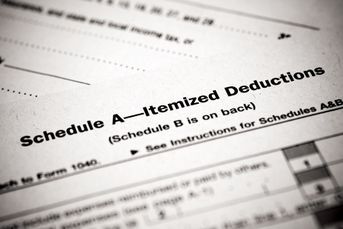Use tax time to focus on retirement
This time of year is perfect for getting clients to contribute to their nest eggs and save on taxes
As Tax Day looms, your clients’ thoughts are probably focused on putting the finishing touches on their 2014 tax return — or at least preparing that extension and kicking the can down the road for a few months. However, don’t let tax season slip by without encouraging them to also do some retirement planning.
Tax season is when they’re most likely to be thinking about their personal finances. That makes it a great time for them to plan for that period after their working years by looking back on 2014 while looking ahead to 2015 and beyond.
TAX STRATEGIES
Even though April 15 is right around the corner, there are still retirement strategies to employ that can affect your clients’ tax liability for last year.
For example, if an individual or his or her spouse had earned income, and is below age 70½, he or she has until April 15 to make a contribution to a traditional IRA for 2014.
(More: Who wants to service a tiny retirement plan? This guy.)
Clients who worked last year for an employer that offered a retirement plan and who had adjusted gross income of below $116,000 (for families) or $70,000 (for a single taxpayer), could take a tax deduction for at least some of their contribution. If just the spouse was covered by a plan, they can deduct at least some of an IRA contribution with AGI of up to $191,000. And if neither individual was covered by an employer plan, they can deduct their contributions regardless of their income level.
Is your client’s income too high to get a tax deduction? Then consider recommending a Roth IRA contribution. There’s no tax benefit today, but those tax-free withdrawals can be valuable in retirement.
And if the client’s income is too high to make a Roth contribution (AGI of over $191,000 for couples, $129,000 for singles), he or she can still make a nondeductible contribution to a traditional IRA. Again, there’s no tax benefit today, but at least some tax-deferred growth can accumulate in the IRA. Just remind clients to include Form 8606 in their 2014 tax return to document the contribution, so the IRS knows that amount will be tax-free when they later withdraw it from the IRA.
If your clients own a business or have any self-employment income, they may still have time to shelter some of those dollars in a retirement plan. For example, a SEP IRA can be established and funded as late as the due date of the tax return for the previous tax year, including extensions. If they extend the deadline for filing their return, they can fund the SEP for 2014 as late as Oct. 15 of this year.
These retirement plans aren’t just limited to full-time businesses, either. A SEP IRA can be set up even for that consulting or teaching job your client did on the side or for that home-based business they run in the evenings.
ROTH REDO
Roth conversions are also worth considering at tax time. It’s too late to do a conversion for 2014 (those must be done by Dec. 31), but if your clients did a conversion last year, they have until Oct. 15 of this year to change their mind. Undoing a Roth conversion, called a recharacterization, makes sense if the tax cost of the conversion turns out to be more than they expected, lessening the value of the transaction to the point where they would be better off keeping the traditional IRA.
(More: Avoiding Roth recharacterization traps)
Looking ahead to 2015, check that your clients’ retirement plan contributions are keeping up with the annual inflation adjustments.
A W-2 from their employer will show how much they deferred into their retirement plan (Box 12). If it was less than the maximum dollar amount for the year, then they have room to increase their contribution for 2015.
The maximum contribution for 2014 varies by plan ($17,500 for 401(k)s and 403(b)s, $12,000 for Simple IRAs), and those limits typically increase by a small amount each year. If an individual is at least age 50 in 2015, he or she can take advantage of catch-up contribution rules to save thousands more.
If your clients expect to have a lower income in 2015 than 2014, they might consider a Roth conversion. Lots of factors can influence the success of a Roth conversion, but doing one in a low-tax year is a great first step. If they’re unsure where their 2015 income will fall, recommend starting with a large conversion; they can use a recharacterization later to fine-tune the actual amount.
There couldn’t be a better time than tax season to help guide your clients through an annual retirement plan checkup and take advantage of any tax breaks available to help meet their goals.
Tim Steffen is director of financial planning for Robert W. Baird & Co. Follow him on Twitter @TimSteffenCPA.
Learn more about reprints and licensing for this article.








